I’ve written about purslane (portulaca oleracea) in many other posts.
Purslane contains more Omega-3 fatty acids than any other leafy vegetable plant. The stems, the leaves and the flowers are all edible. Ms. Simopoulos states that Purslane has .01 mg/g of EPA. This is an extraordinary amount of EPA for land based vegetable sources. EPA is an Omega-3 fatty acid normally found mostly in fish and some algae. It also contains vitamins (mainly vitamin C, and some vitamin B and carotenoids), as well as dietary minerals, such as magnesium, calcium, potassium and iron. Also present are two types of betalain alkaloid pigments, the reddish betacyanins (visible in the coloration of the stems) and the yellow betaxanthins (noticeable in the flowers and in the slight yellowish cast of the leaves).
Both of these pigment types are potent antioxidants and have been found to have antimutagenic properties in laboratory studies.
We did not plant any purslane but it suddenly appeared in our garden this year. I guess that the birds may have dropped some in the garden . All purslane needs to grow is part to full sun and clear ground. They are not picky about soil type or nutrition. But, purslane does tend to grow better in drier soil.
It grew in abundance and we have been eating a lot but it’s impossible to eat it all. So, what better way to keep the bounty of the season’s harvest for the winter, than pickling it.
This year I made this pickle twice. The first time I added more water (ratio: 2 vinegar – 1 water) which made the vinegar less strong. I wanted more acidity so this year I reduced the amount of water. I also added some elixir of vinegar’s nectar, which is an aged vinegar (5 years) mixed with fruit and herbal extracts of peppers, cardamom, ginger etc. which adds extra taste and aroma to the pickles.
I have already made some new recipes, which I will be posting in the future. Until then you can use the picled purslane in your salads or serve as it is to accompany fish or meat dishes.
Pickled Purslane
Preparation time: 15 minutes
Cooking time: 30 minutes
Makes: 3 kilo jars
Ingredients:
- 650 grams tender purslane with stems
- 1000 ml red wine vinegar, 6% acidity
- 1 cup water
- 1/4 cup (4 tbsp) honey
- 20 hot chilli peppers
- 1 tsp fennel seeds
- 1 tsp crashed coriander seeds
- 1 tsp black peppercorns
- 1 tsp sweet chilli flakes
- 2 tbsp Himalayan pink salt
- 1 tsp coarse sea salt
- 1 tsp mustard seeds
- 1/4 cup elixir of vinegar’s nectar (optional)
- Extra virgin olive oil
Directions:
- Wash and dry purslane and set aside to dry. Cut only the tender stems.
- Fill the sterilized jars with purslane.
- Put the remaining ingredients in a pot and bring to a boil. Simmer for five minutes.
- Set aside until lukewarm and mix in the elixir of vinegar’s nectar.
- Divide the vinegar mixture in the sterilized jars, adding the spices as well.
- If the pickles are not sufficiently covered with the vinegar, add enough olive oil, until covered.
- Store in a closet.
You can find many more Greek recipes in my cookbook “More Than A Greek Salad”, and “Mint, Cinnamon & Blossom Water, Flavours of Cyprus, Kopiaste!” both available on all Amazon stores.
Other relevant recipes:
Minty, Avocado and Purslane Tzatziki
Purslane Salad, Purslane Tzatziki and Carrot Tzatziki (in one post)
Kopiaste and Kali Orexi,

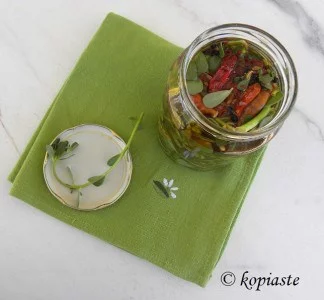
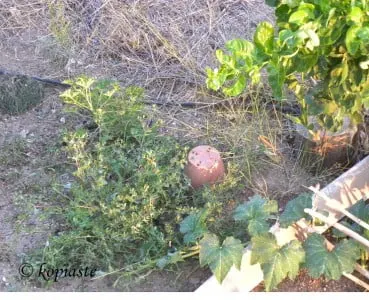
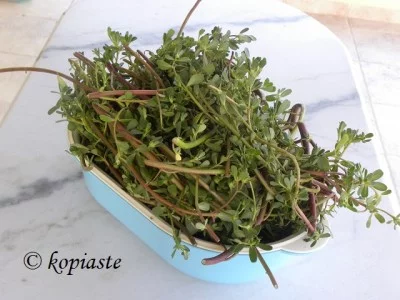
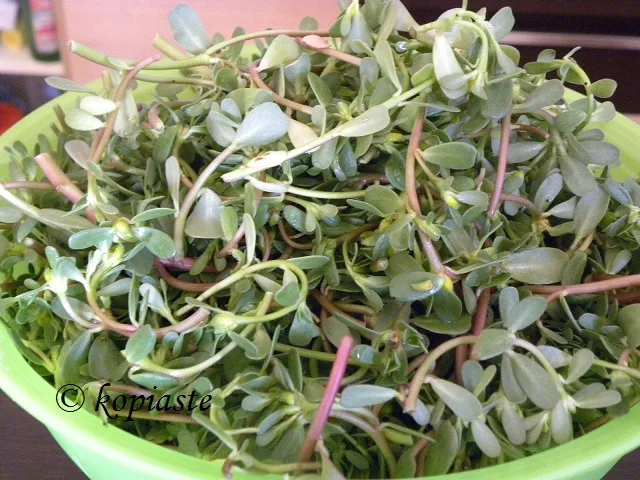
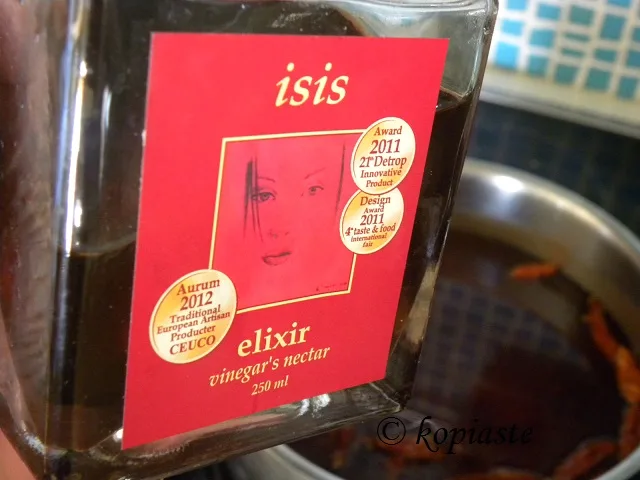
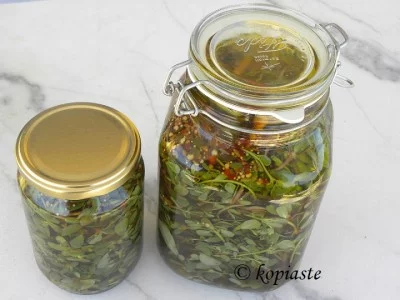
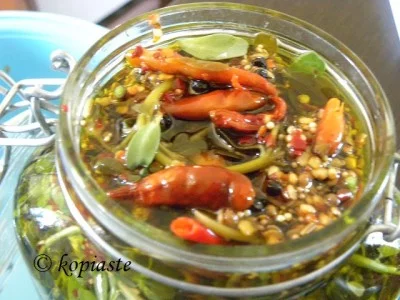

Claudia
Wednesday 20th of August 2014
So mouth watering! That appears to be irresistible.
Angie
Friday 15th of August 2014
They look very much like watercress we use in soups and stir-fries. The pickles must be very appetizing.
Ivy
Friday 15th of August 2014
Watercress is nerokardamo in Greek and it does have a similar taste. This one also has succulent leafs with a slightly lemony taste. However, if you pickle watercress, I think the result will be more or less similar. The same goes for the caper plant. We pickle the stems in Cyprus, whereas in Greece, I have only seen the buds pickled.
Taste of Beirut
Thursday 14th of August 2014
Wow!! What a great idea!! We eat purslane a lot in Lebanon. I will try your pickling method when I get the next batch.
Ivy
Thursday 14th of August 2014
Thank you Joumana. I've been making so many amazing recipes with purslane lately. Hope to share them soon.
Rosa
Wednesday 13th of August 2014
An intertesting recipe. I bet that pickle tastes wonderful!
Cheers,
Rosa